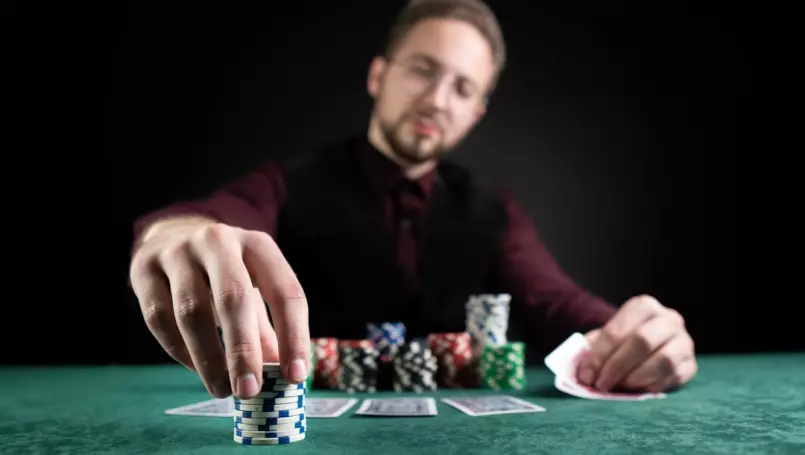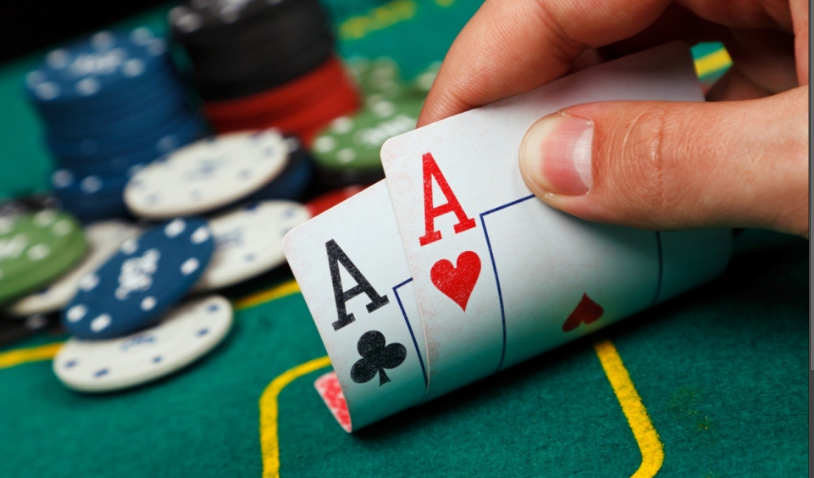Exploring Heads-Up Poker: Understanding Strategies and Guidelines
Often linked alongside Texas Hold ’em or Omaha, heads-up poker distinguishes itself as a distinct approach rather than an entirely new poker format. Unlike the more widely known variations, heads-up poker is a method of engaging with these games. Below, we delve into the specifics of heads-up poker, including its definition, gameplay intricacies, the strategic essence that underpins it, and the rationale for its inherently assertive style.
Defining Heads-Up Poker:
Heads-up poker denotes a scenario in which only two players participate in a hand, forming a direct one-on-one confrontation. It can be applied to nearly any poker variant, essentially leading to a face-off within the broader context of the game. This type of poker might manifest during the conclusion of a larger cash game, when the table is thinning out and two players are left, or it could materialize as a deliberate occurrence between two players awaiting additional opponents to initiate a regular poker game. Online poker platforms frequently host heads-up tournaments as well, catering to those seeking this unique dynamic.
Navigating Heads-Up Poker Rules:
While the fundamental rules of prevalent poker forms remain largely consistent in heads-up play, a noteworthy alteration pertains to the positioning of blinds. In standard community card games like Texas Hold’em and Omaha, the conventional placement of small and big blinds is inverted during heads-up encounters. Ordinarily, the player proceeding clockwise from the dealer (or the digital dealer in online settings) posts the small blind, followed by the adjacent player to post the big blind. Subsequent betting commences with the participant to the left of the big blind. Contrastingly, in heads-up matches, the dealer takes on the role of the short blind, with their counterpart occupying the big blind position.
The Reasoning Behind Reverse Blinds:
This inversion of blinds in heads-up poker serves to maintain equity in the gameplay. Without this reversal, the non-dealing player would gain an advantageous position by acting first in betting rounds, both before and after the flop, due to the reduced player count. Moreover, if the dealer were positioned as the big blind and decided to fold, they would effectively be surrendering their big blind to the small blind, a violation of foundational game rules.
Elevating Strategy Through Heads-Up Poker:
Heads-up poker serves as a fertile ground for strategic exploration. The intense one-on-one nature of the game amplifies the significance of decisions, necessitating a heightened strategic outlook. With only two players, bluffing, hand reading, and understanding opponent tendencies become pivotal elements. The inherent aggressiveness in heads-up play stems from the necessity to seize control and initiative, as passive approaches can lead to exploitation. The limited player dynamics further emphasize adaptability and the capacity to swiftly adjust strategies based on evolving circumstances, transforming heads-up poker into a captivating arena of skillful maneuvering.
In essence, heads-up poker enriches the realm of poker with its distinctive style, engaging strategic intricacies, and the dynamic interplay between just two contenders.

Capitalizing on Heads-Up Poker’s Strategic Potential
In the realm of heads-up poker, where the competition narrows down to just a single adversary, the odds of securing victory in each hand are notably high. Consequently, players frequently adopt an aggressive approach, buoyed by an increased likelihood of successful outcomes for bluffs as well.
Once this one-on-one dynamic is grasped, an avenue opens up for precision adjustments based on your opponent’s playing style. Central to these adaptations are your decisions concerning raising frequency, calling tendencies, and the assertiveness you exhibit when contending for pots.
As tables progressively transition to a more concise composition, your propensity for aggression can be further amplified. It becomes imperative to exercise more restraint in later stages of the hand. Remarkably, in a heads-up confrontation, a high card often wields substantial influence on the flop, lessening the necessity to rigidly adhere to “fit or fold” strategies due to the singular adversary.
Navigating Aggression in Heads-Up Poker
In scenarios where the tables are turned, confronting aggressive adversaries in heads-up poker can indeed generate stress. These rivals adeptly wield continuous pressure by employing tactics like raising, three-betting, and strategic check-raises or bluffs.
Rather than concocting entirely new strategies, players frequently succumb to a sense of fluster. They find solace in focusing on counterproductive actions, occasionally relinquishing control in the process. To better counter an aggressive opponent, adopting subtle modifications to your approach can prove invaluable.
Employing Contrasting Tactics
One of the initial adjustments to consider involves the breadth of your opening range and postflop defense. This strategic shift essentially entails adopting a style that diverges from your adversary’s approach. Scrutinizing your opening hands through the lens of their susceptibility to a potential three-bet—likely from your opponent—enables a more selective opening range. If a hand doesn’t warrant a call in the face of a three-bet, opting for a fold and swiftly transitioning becomes a prudent choice.
Tempering Bluff Frequency
This tactical adjustment derives from the understanding that confronting aggressive counterparts necessitates cultivating actions of inherent value, given the passive stance you’re adopting. Prolific bluffing risks exposing you to consistent calls and re-raises from your opponent, leading to substantial financial setbacks.
In essence, heads-up poker offers an arena rife with strategic possibilities. Understanding the impact of aggression and employing adept countermeasures are pivotal for thriving in this intense one-on-one milieu.


